Hello, wonderful people in this awesome community. How are you today? The Easter days are over, but I didn't have the chance to write this on time because I have a lot of work to catch up on. Today, I will show you how I spent my Holy Week visiting Southern Churches.
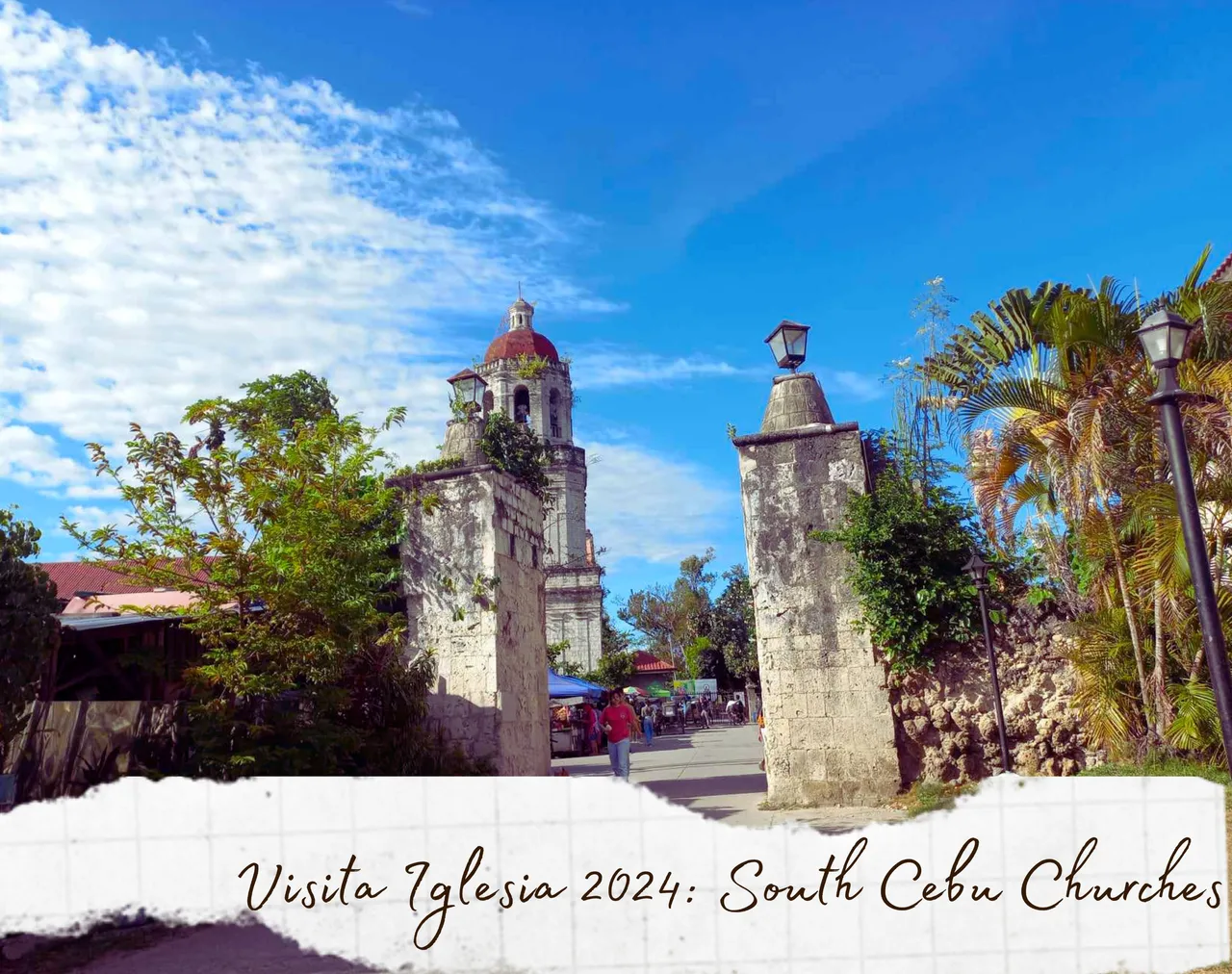
My annual commitment is to do a Visita Iglesia to some churches in Cebu City during the Easter season with my friends or Aunts. But for the first time, I like to visit churches in some parts of Southern Cebu for this Easter Season. Come with me as I embark on my journey and witness the holy and magical places of the churches I visited
Days before Holy Week, my friend and I decided to have the Visita Iglesia in the Southern Part of Cebu. We will try to pay a visit to the churches and say a prayer.

It's Friday morning when we started to embark on our journey. The radiant heat of the sun started to occupy the ground, yet our goal and our dedication to doing this were strong. So, around 8 in the morning from Cebu City, our first stop will be in Pardo, Cebu - Santo Tomas de Villanueva Parish. It was half an hour's travel from where we started and because a lot of people are traveling to the countryside, so we were not struck by the traffic.
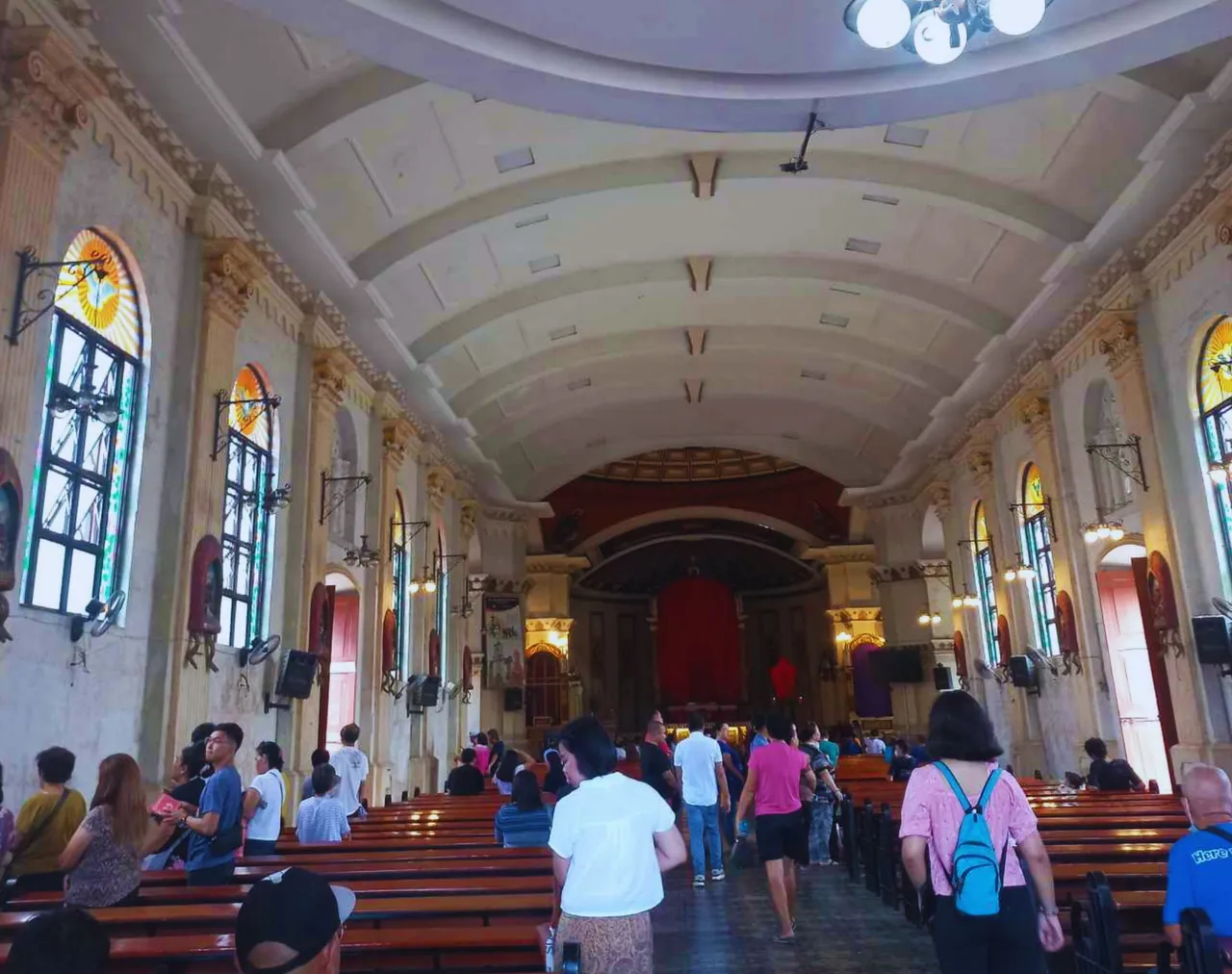
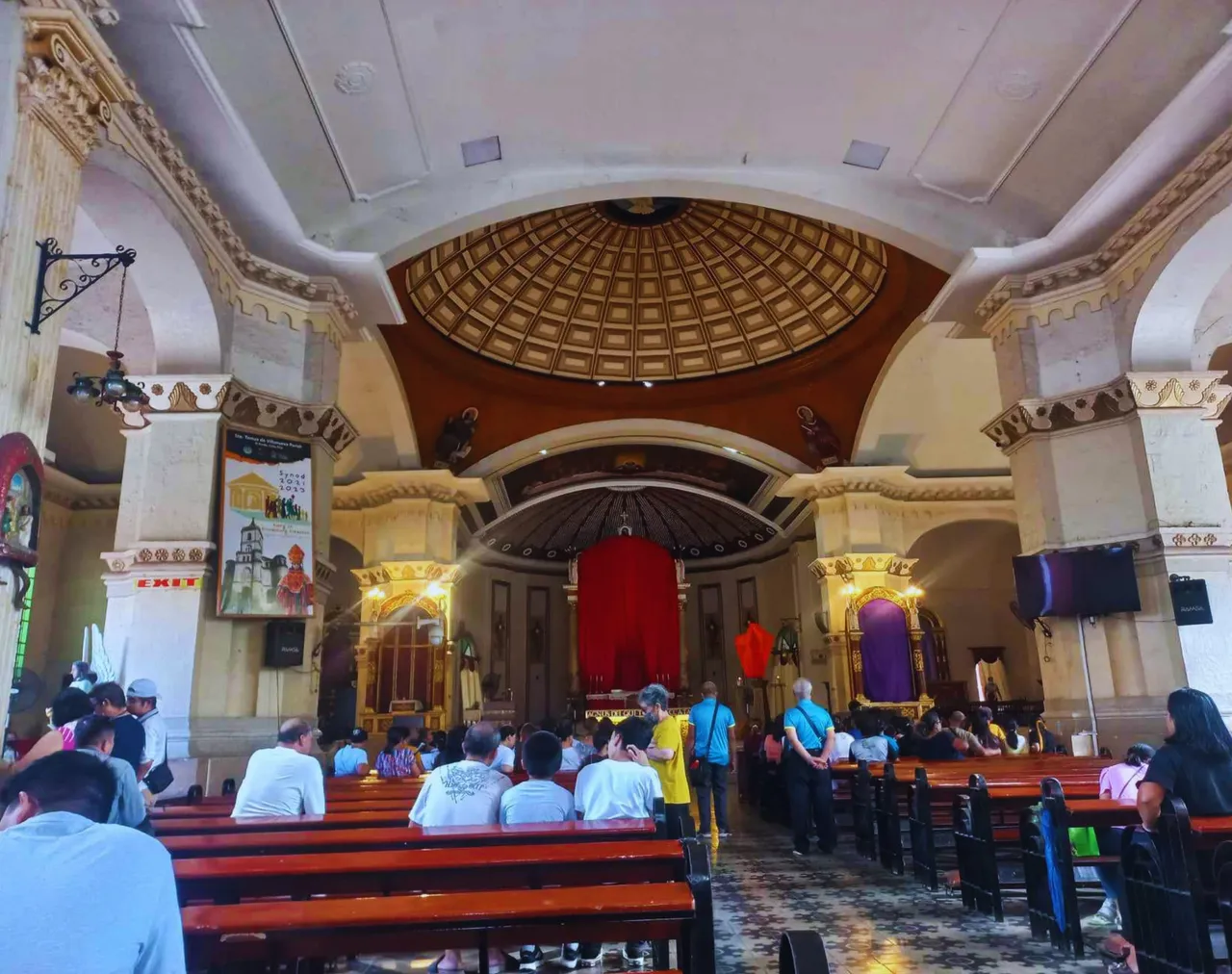
This is our first stop - The Santo Tomas de Villanueva Parish Church in Pardo, Cebu City, commonly known as the Father of the Poor. Arriving at this place for the first time means a lot to me. I saw this church many times but I never had the chance to say a prayer and get inside this holy place. This 19th-century Roman Catholic church is located in Población, Pardo, Cebu City. It's along the road and it's very accessible to public transport.

One of the unique features of this historical church is its quadrilateral-shaped bell tower which is the central facade of the church and rises to five stories high. The edge of its bell tower is guarded by another two round domed towers. Right beside the church situated a small grotto.

A lot of people are giving prayer to the different stations of the cross which can be seen inside the holy place. Outside this beautiful place is the wide parking space for churchgoers. It's also very refreshing outside for a lot of grown trees around can be seen.
Thirty minutes from our first stop, we had another church visit in Minglanilla, Cebu - The Archdiocesan Shrine of the Immaculate Heart of Mary also known as Purisimo Corazon De Santa Maria Parish. A Gothic Marian Church was built during the Spanish domination in a coastal village from 1880 to 1886.


This hilltop church has a lot of Gothic features. Its colorful colors which were repainted in August 2005, from pink to blue and white add to the Marian features of the church.
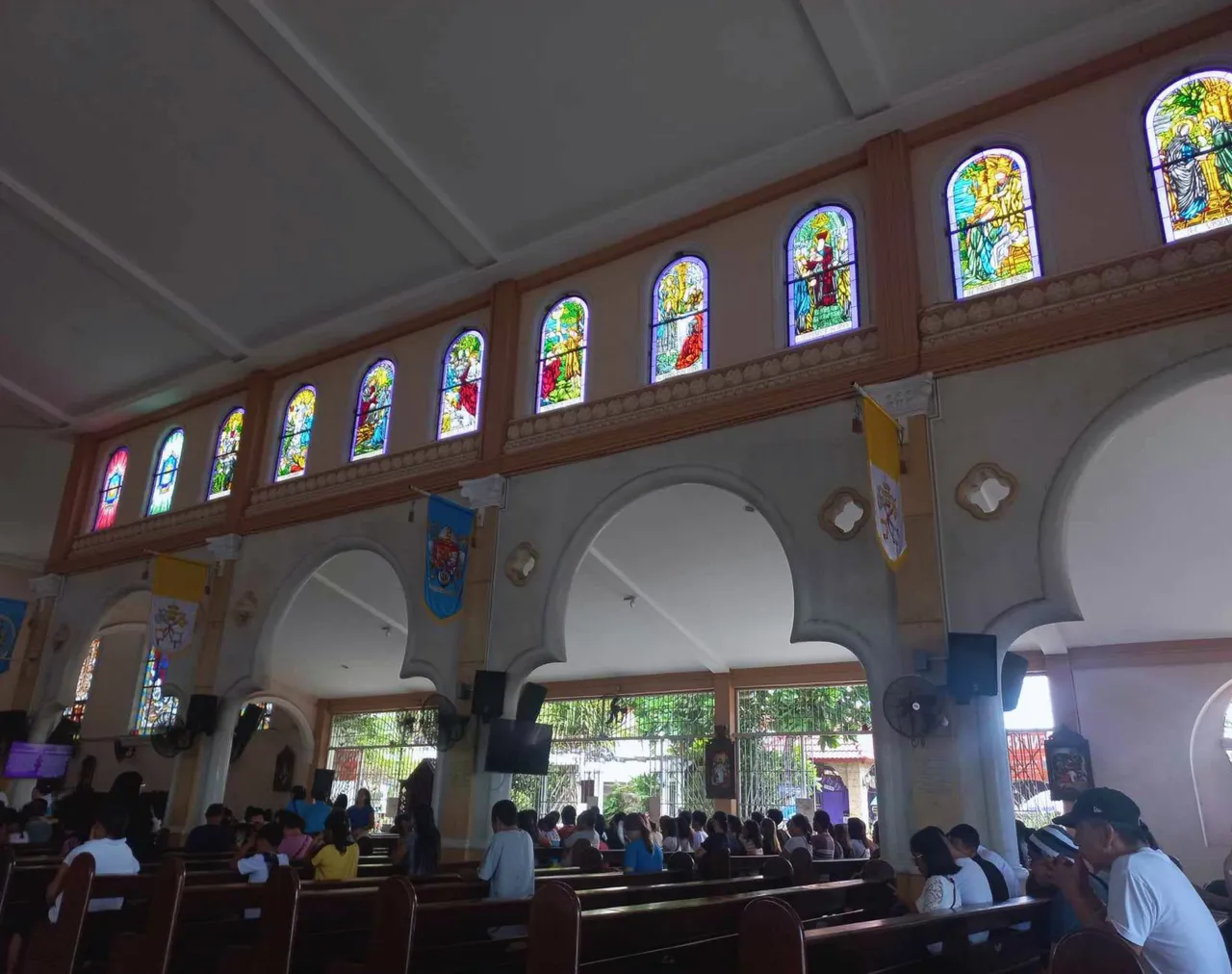
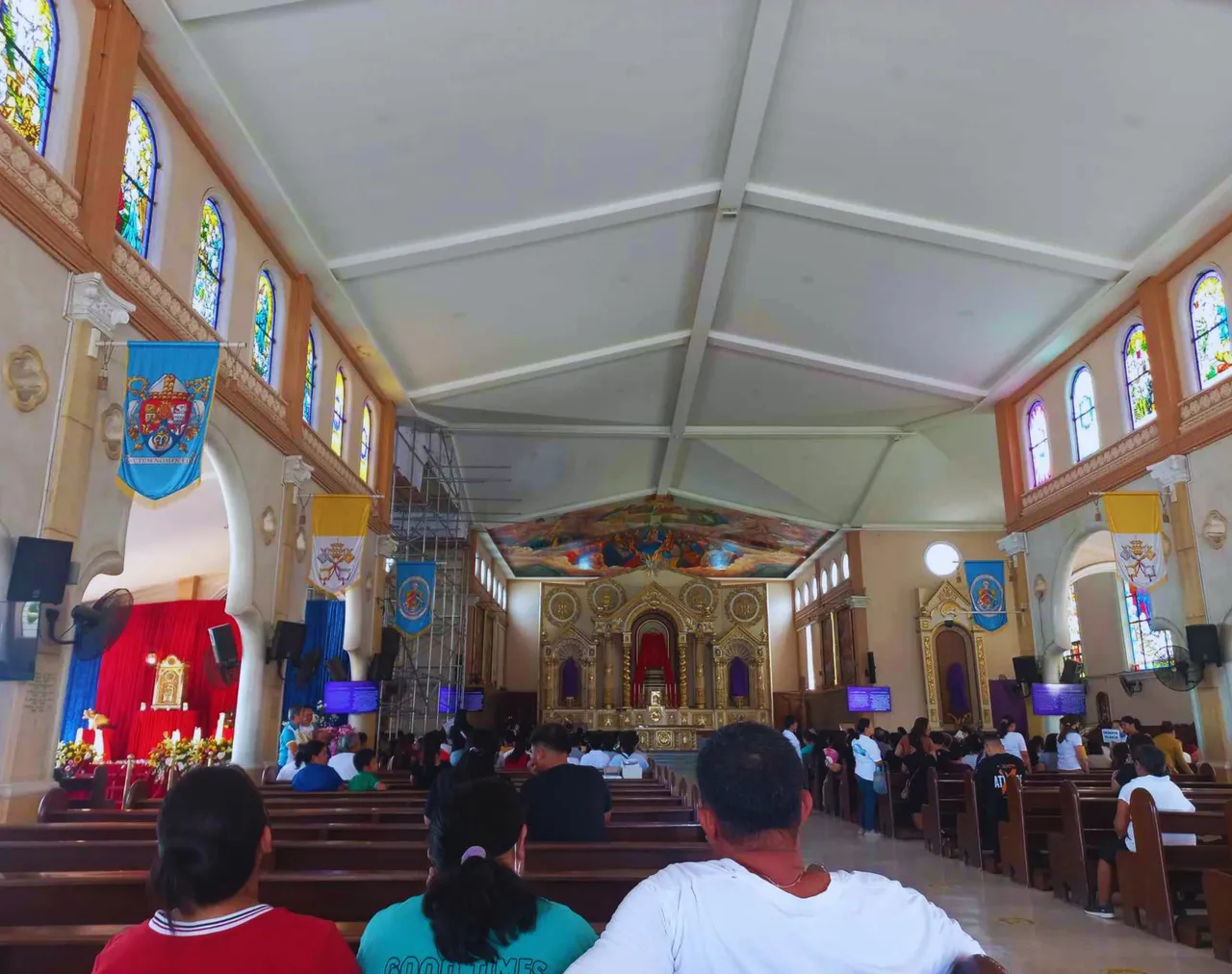
The entrance door is an arch with a keystone with a seal. It is surrounded by two pairs of pilasters made up of a base, two center grooves separated by a gable, a flat part with a rectangular pattern, an arched door, a rose window, and a decorative band.

Our 3rd stop is the church in Naga Cebu, the Archdiocesan Shrine of St. Francis of Assisi. The facade is a combination of several columns of pilasters. In front, you can see that it has a lot of decorations: cherub figures, stars, and others.

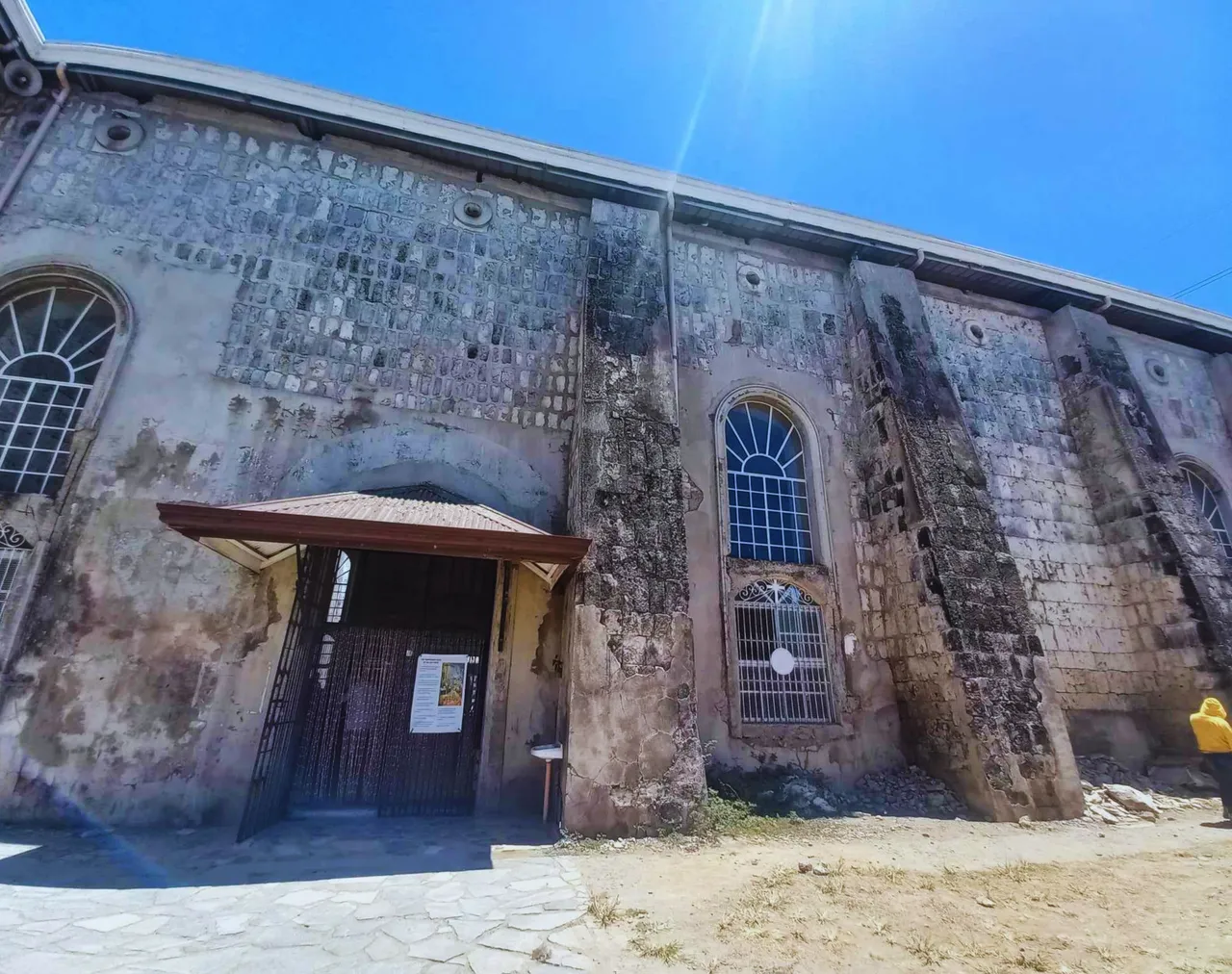
The church is white but because of its old figure, the painting cannot be clearly seen but the beauty of the church still gives us an awe feeling. On the side is the bell tower with five stories of a pyramid figure with open arches on every story.
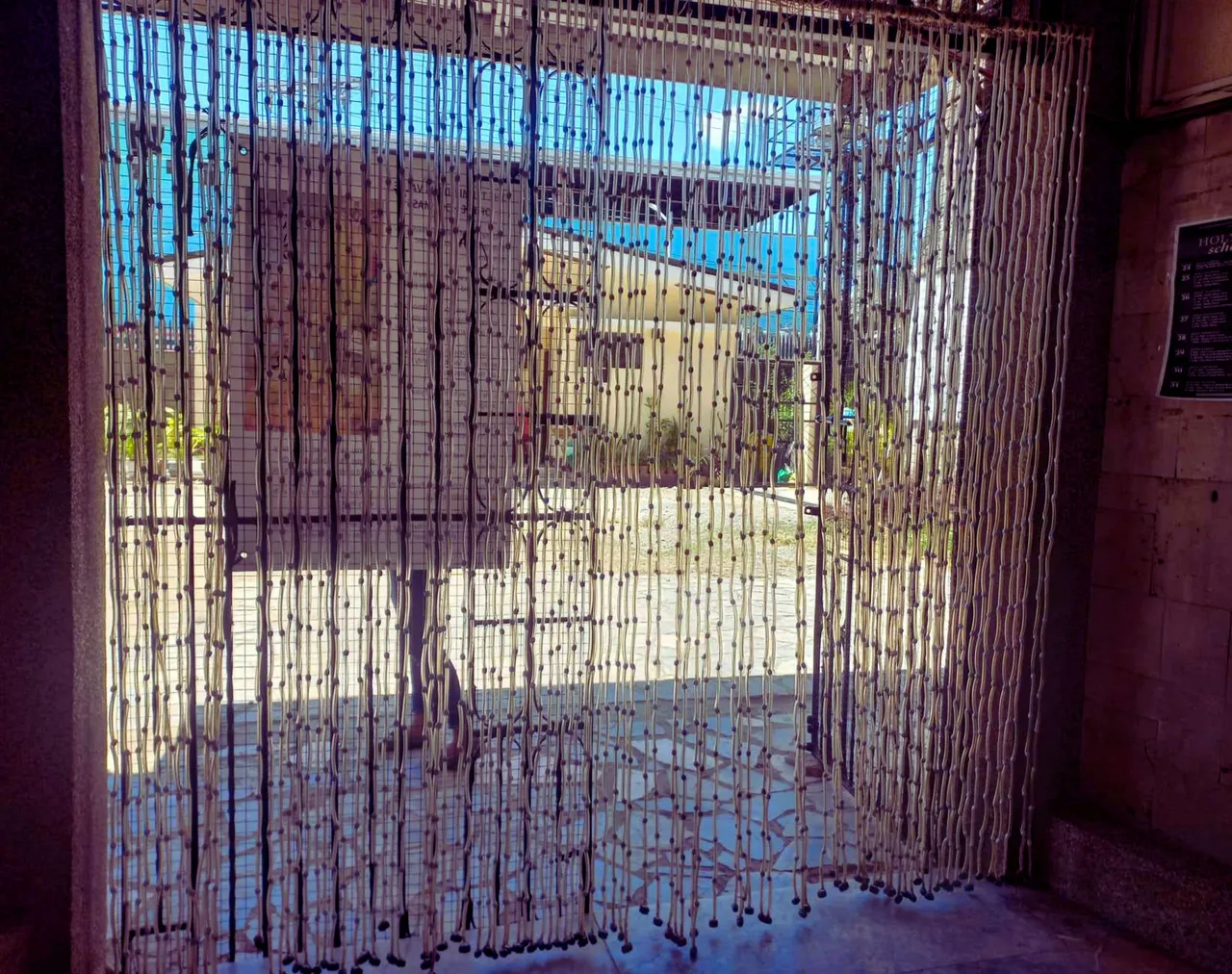
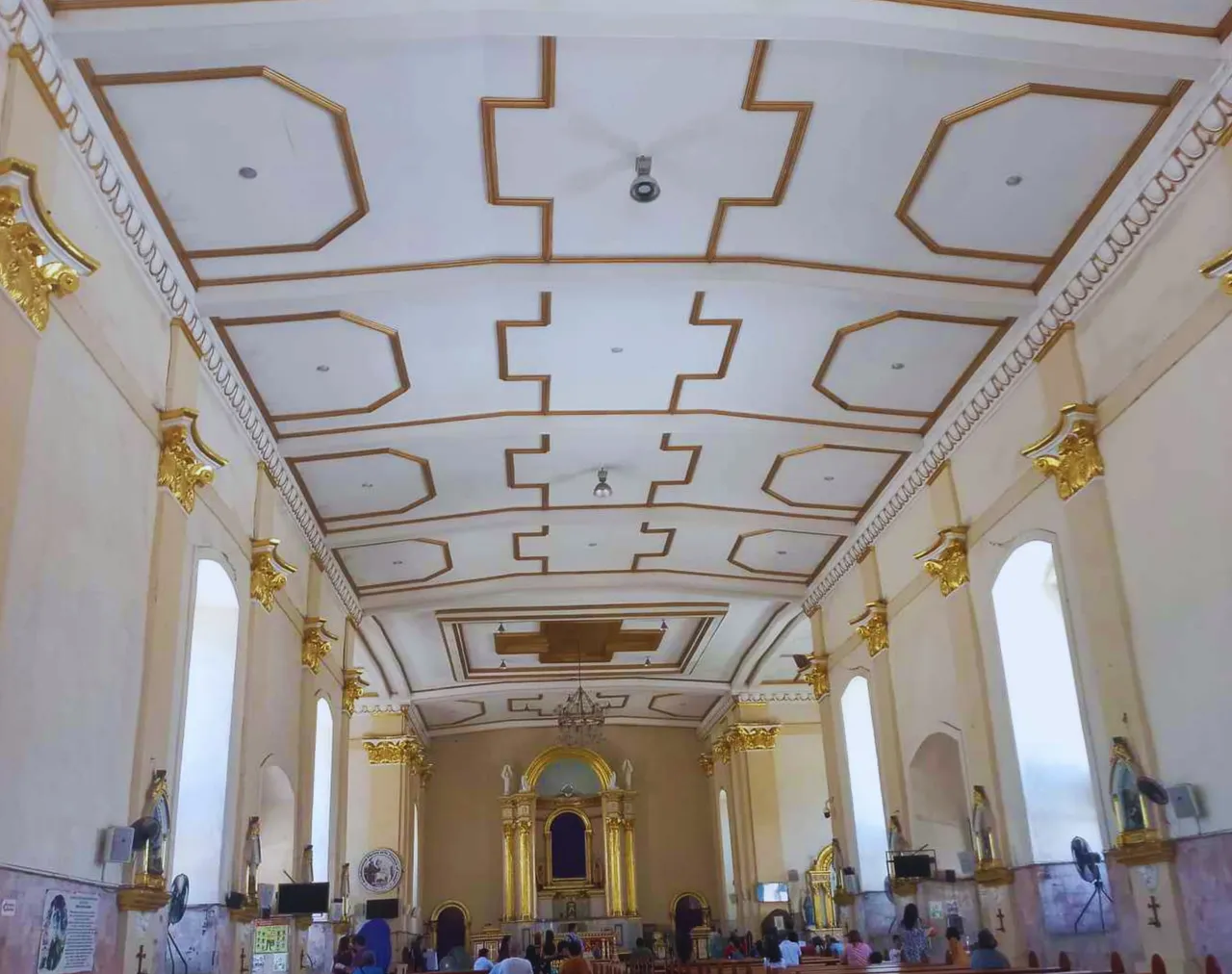
Another unique fact about the church is on its doorways, you can see a rope hanging before you can pass each door.
Even how hot it was during our Visita Iglesia, we did not withdraw our purpose. Our fourth stop is the little church in San Fernando Cebu which you can see along the highway, Pitalo Church, one of the smallest churches in Cebu.
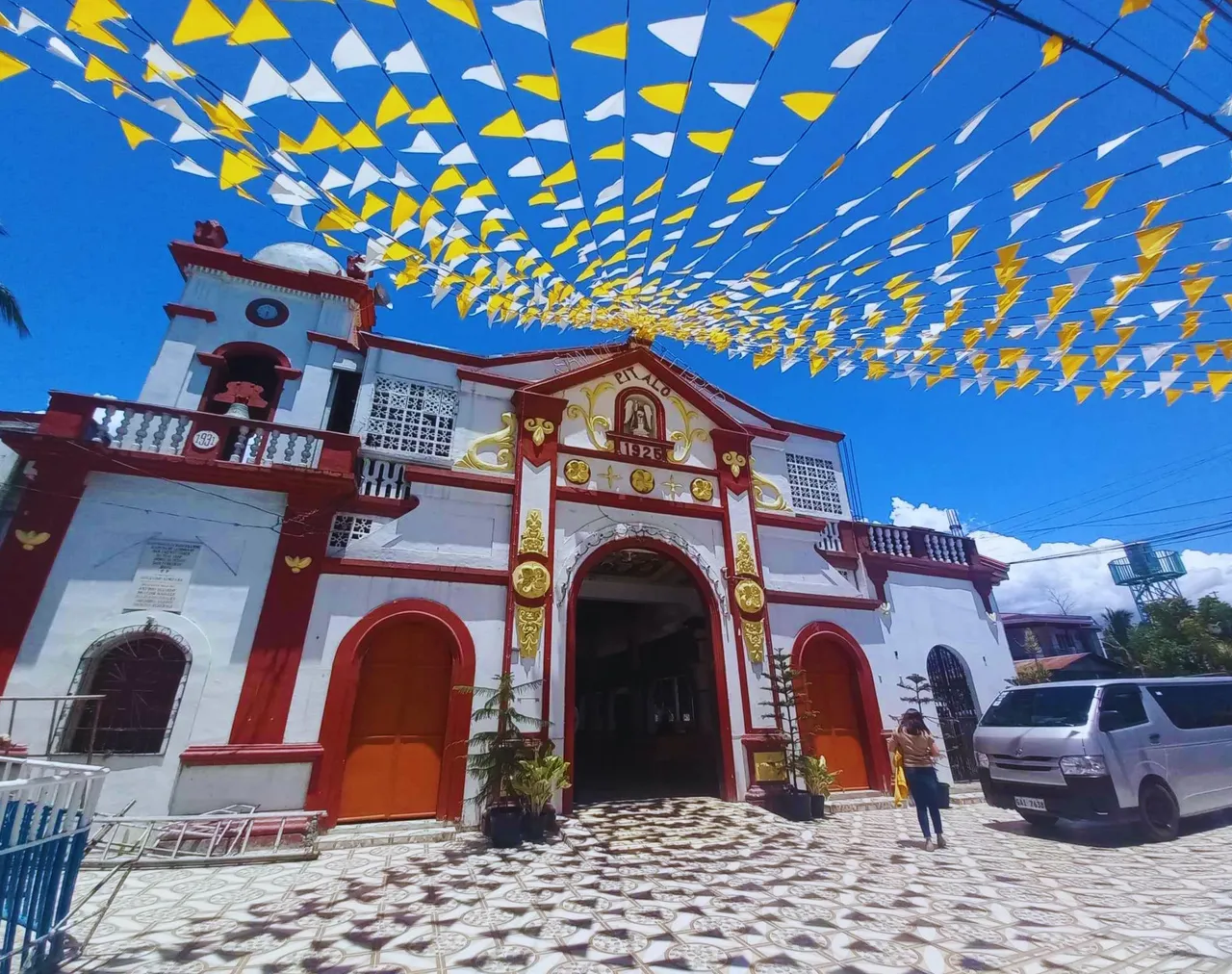
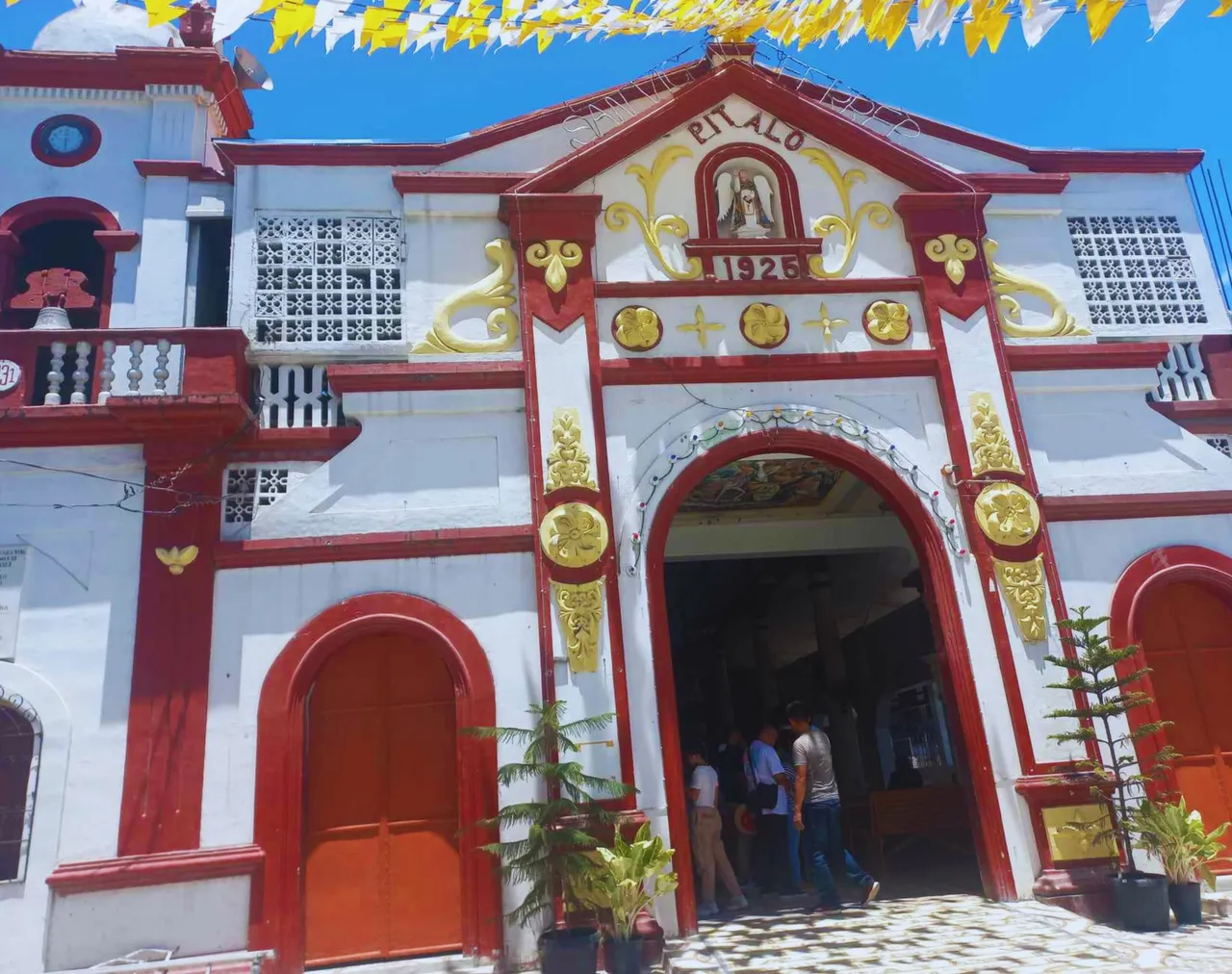
The church is just next to the national highway. The church has an image of its patron saint, San Vicente Ferrer. You can see how colorful the church is based on the painting and decor on its walls. Above its church facade, you can see the year that the church was built "1925". Though the church is not so big but you can see a lot of churchgoers inside this holy place. Above its ceiling, is a decorative painting.

The scorching heat of the sun is radiating all over us we go on to our fifth church. This time it's almost noon. And as you can see the colored blue sky prevails which means no clouds covering the place as we were making with our travel.

The next stop is the holy church of Carcar City, The Archdiocesan Shrine of Saint Catherine of Alexandria. Located on a hilltop, next to its Municipal Hall and a mini plaza. The place was a strategic location during the Spanish Era, where it could be easily defended from enemies whenever they were approaching from the sea.
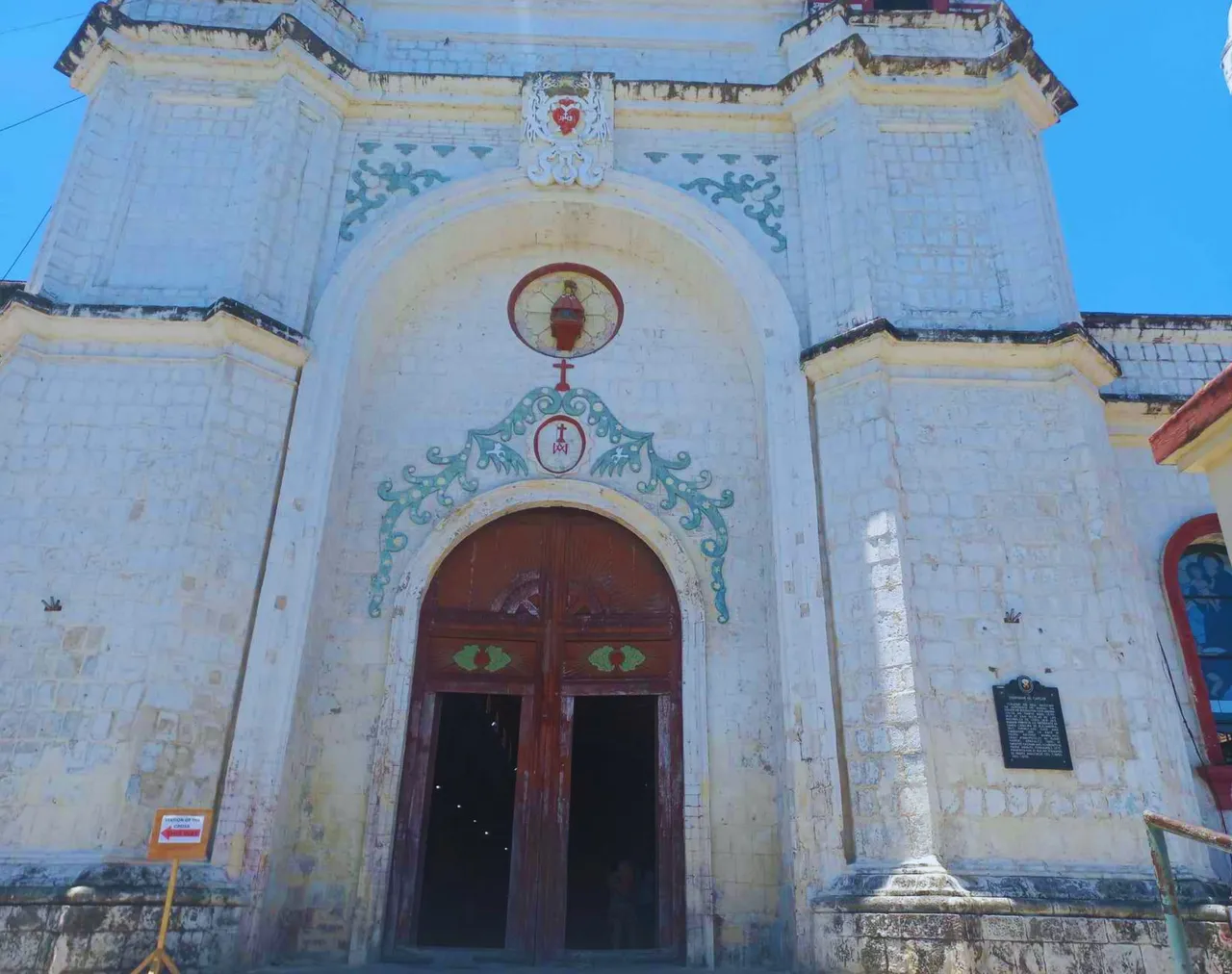
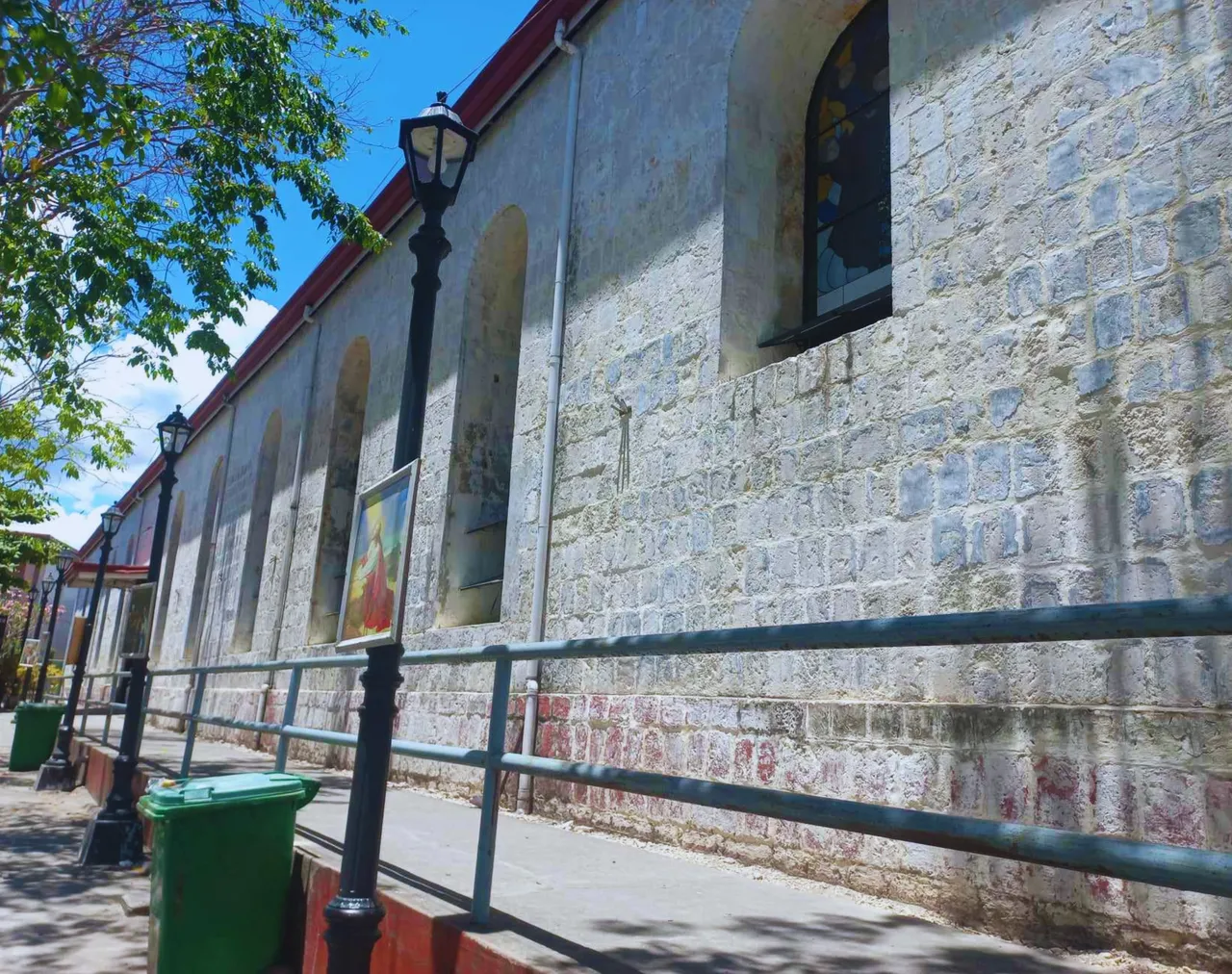
Built with thick walls and tall bell towers on the side and functions as an early warning system, a fortress, and protection for its people during those times.


As a first-timer in the place, my eyes fell in love with the beautiful paintings on the ceiling of the holy church. The ceiling mural was executed from the 1910s to the 1920s. The artwork is a portrayal of an optical illusion of a three-dimensional space with rosettes as a motif.


This holy place is a National Cultural Treasure and Catholic church of Graeco-Roman architecture. The Augustinian friars established the holy place in 1559, and thus it is regarded as one of the oldest parishes erected in Cebu.
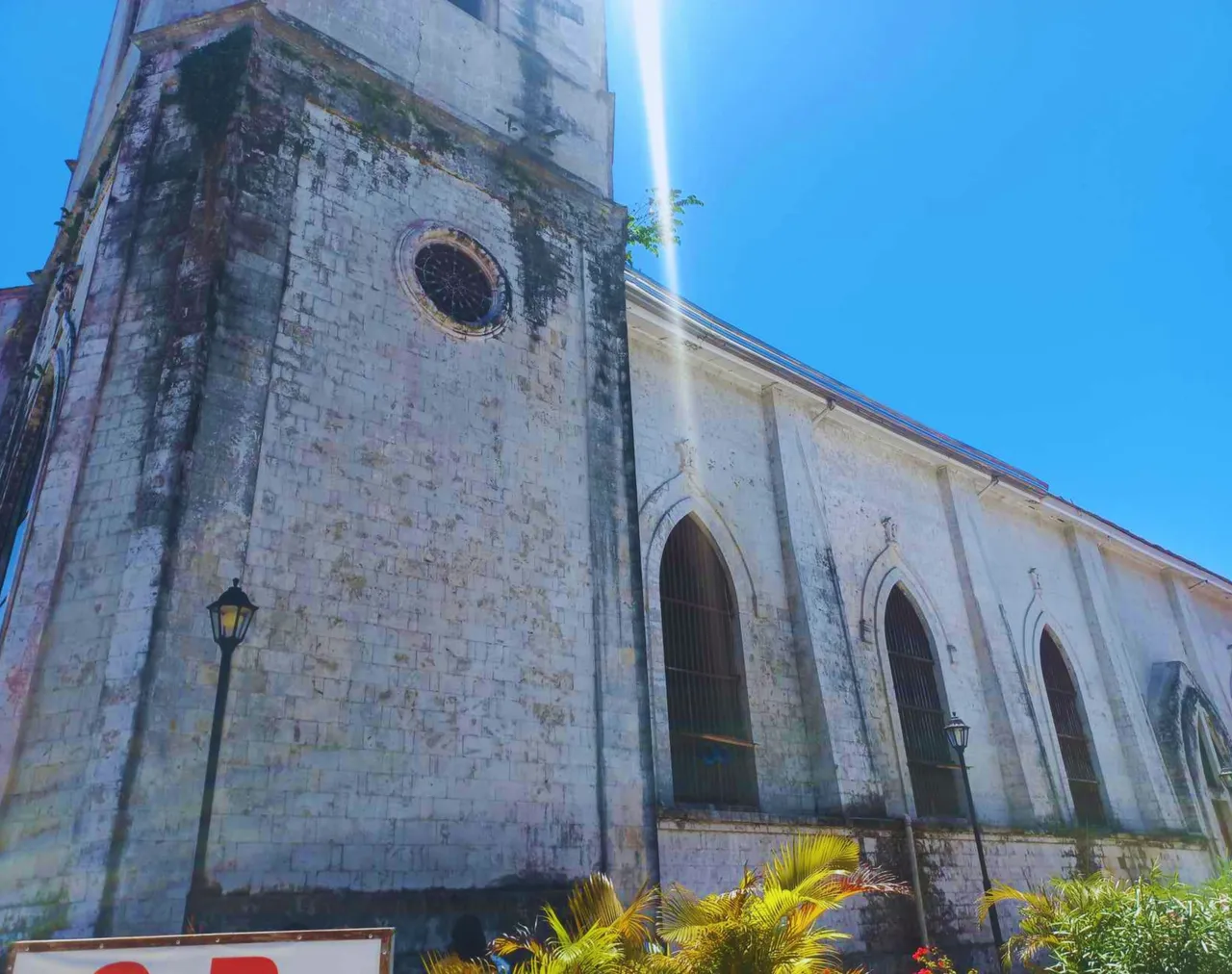

Moving on to our next destination is the Our Lady of the Pillar Church in Sibonga, Cebu. The church is located along the national highway. Fact about the place, this is recognized as a heritage structure by the National Historical Commission of the Philippines. Compared to other churches, this holy church is less embellished yet its unique features will still gives an awesome impression.

The main door is a pointed arch formed with its name " Our Lady of the Pillar". It has twin bell towers with pointed arches and stained glass windows on both sides. The bell towers contained the images: on one side is the image of image of the Our Lady of Pillar and on the other side is St. Philomena.

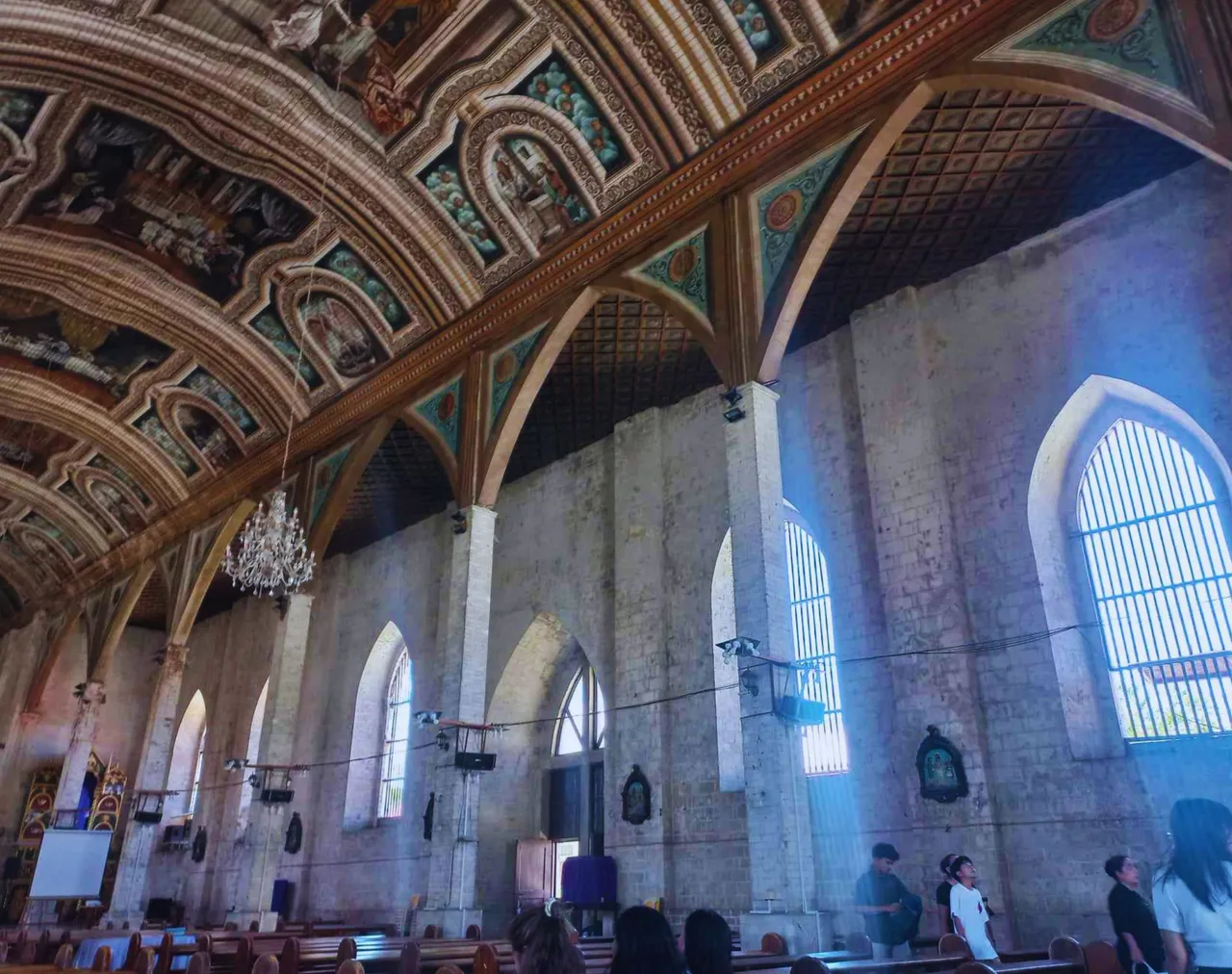
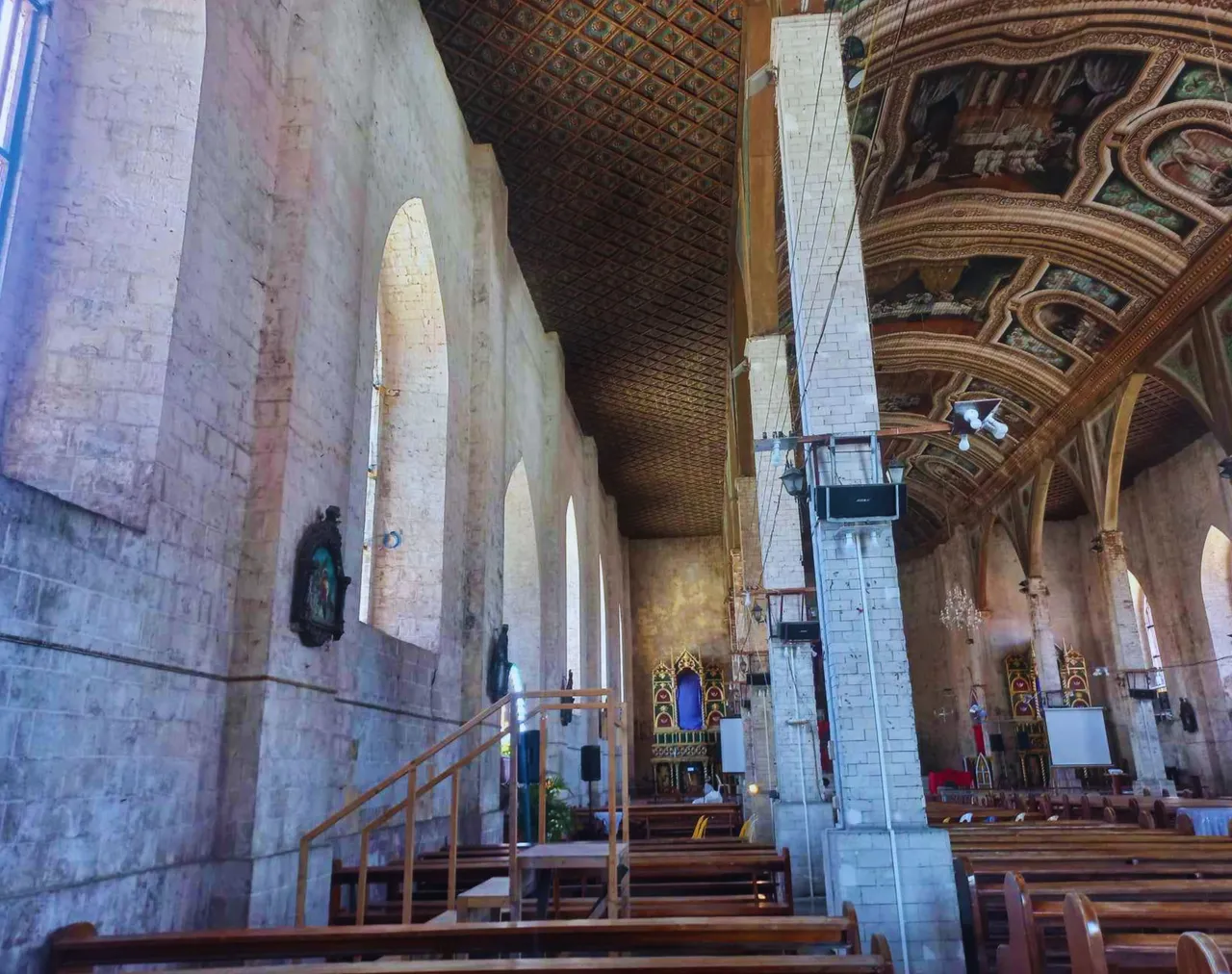
What impress me more is the ceiling of the church as you go in. The mural paintings contain images that depict details about the Catholic faith. Both sides have an open windows.
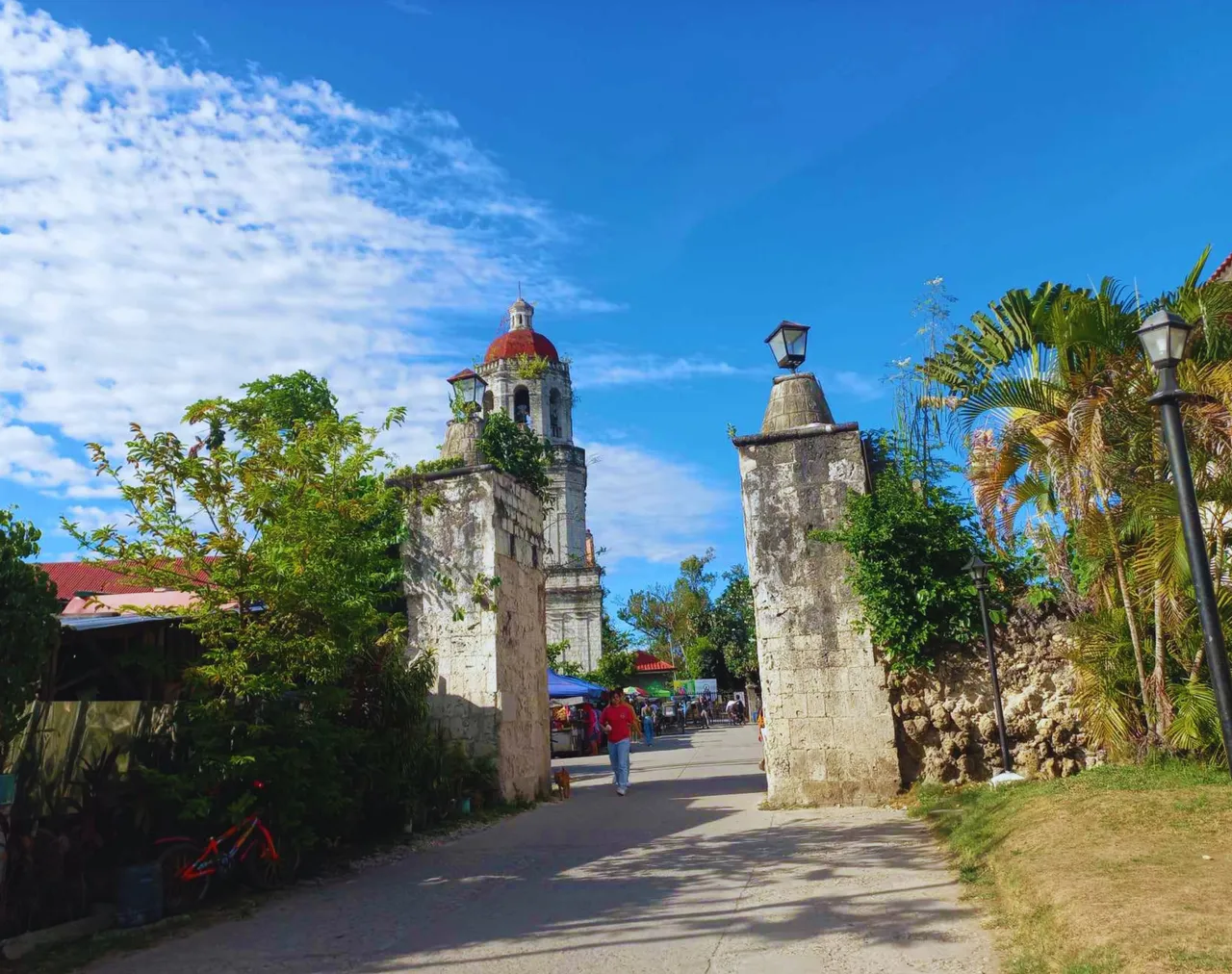
Our next stop is almost 40 minutes away from Sibonga Cebu. Now, the blazing heat of the sun can be felt again. No clouds are covering the radiant blue sky. I told myself, we are almost there. It was past 1 pm when we got to see the beautiful church of St. Michael the Archangel Parish. And because we just relied on Google Maps for all the churches we visited, sometimes we were lost yet because the people around were so kind if asked about the directions, then we got to make it on time.
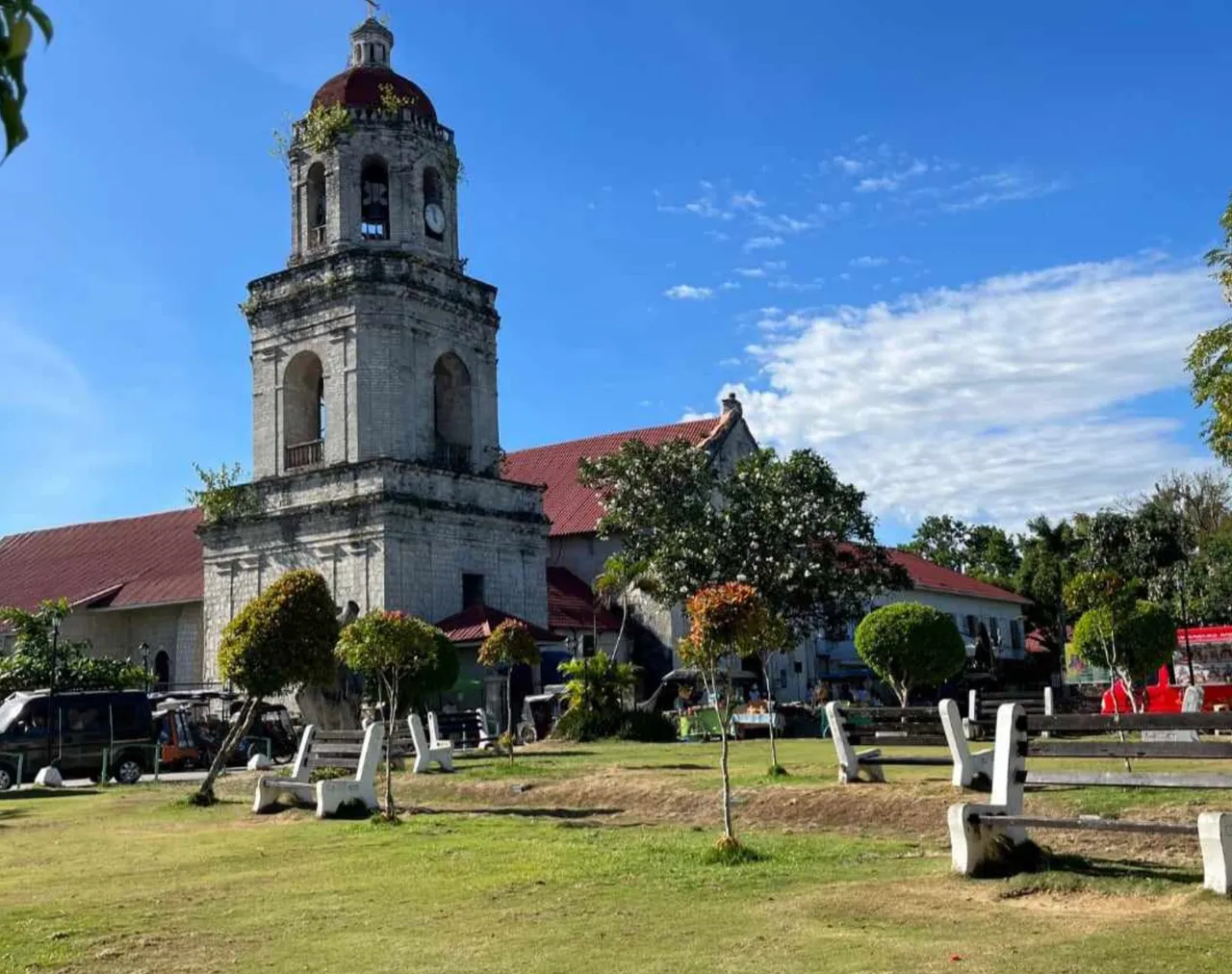
As we were approaching the church, we could see a lot of saints being carried near the balcony of the church for the procession that would begin at 3 pm. So we hurriedly went inside and made a prayer.
It was so overwhelming seeing the people and making prayers also during this easter season. Visiting this magical and holy place is an achievement for me. This magical church is adjacent to the town plaza it is very refreshing seeing heritage structures nearby.
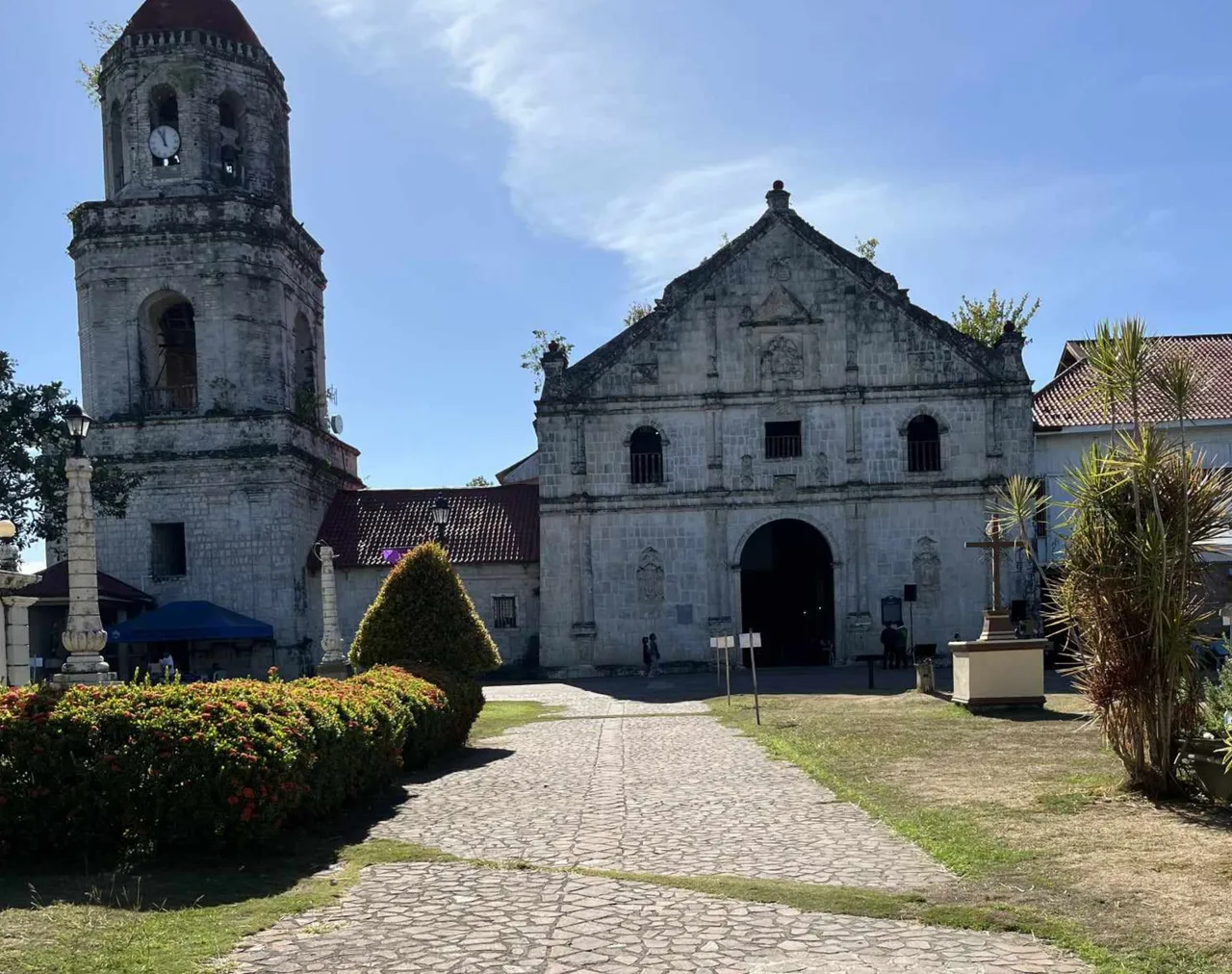

This holy place is made of stone with its vaulted wooden ceiling and in a horizontal-rectangular shape. Its construction began in 1734 and was completed in 1788, making it a Baroque Rococo structure. The entrance is a semi-circular arched shape decorated with different spread eagles and Corinthian capitals. The e-level belfry of the church is situated on the left side of the facade and has a rectangular base with a hexagonal upper level. The bell tower is topped with a dome and a cross.
Our last stop is the San Guillermo de Aquitania Church in Dalaguete, Cebu. It's almost 50 minutes away from Argao. So we arrived at the place past 2 pm. It's almost time for the procession so we have less time in giving prayer inside the holy church.


The holy church is an example of a historic Baroque Roman Catholic church during the Spanish regime in the Philippines and is considered one of the National Historical Landmarks. It is placed adjacent to their beautiful Plaza facing the sea.


The church is considered one of the treasured gems of the place because of its unique features. The 3-layer belfry of the church is situated on the left side. Apart from the church and tower, there is also a nice preserved convent made of wood attached to the church. The Church was built in 1802 and completed in 1825.
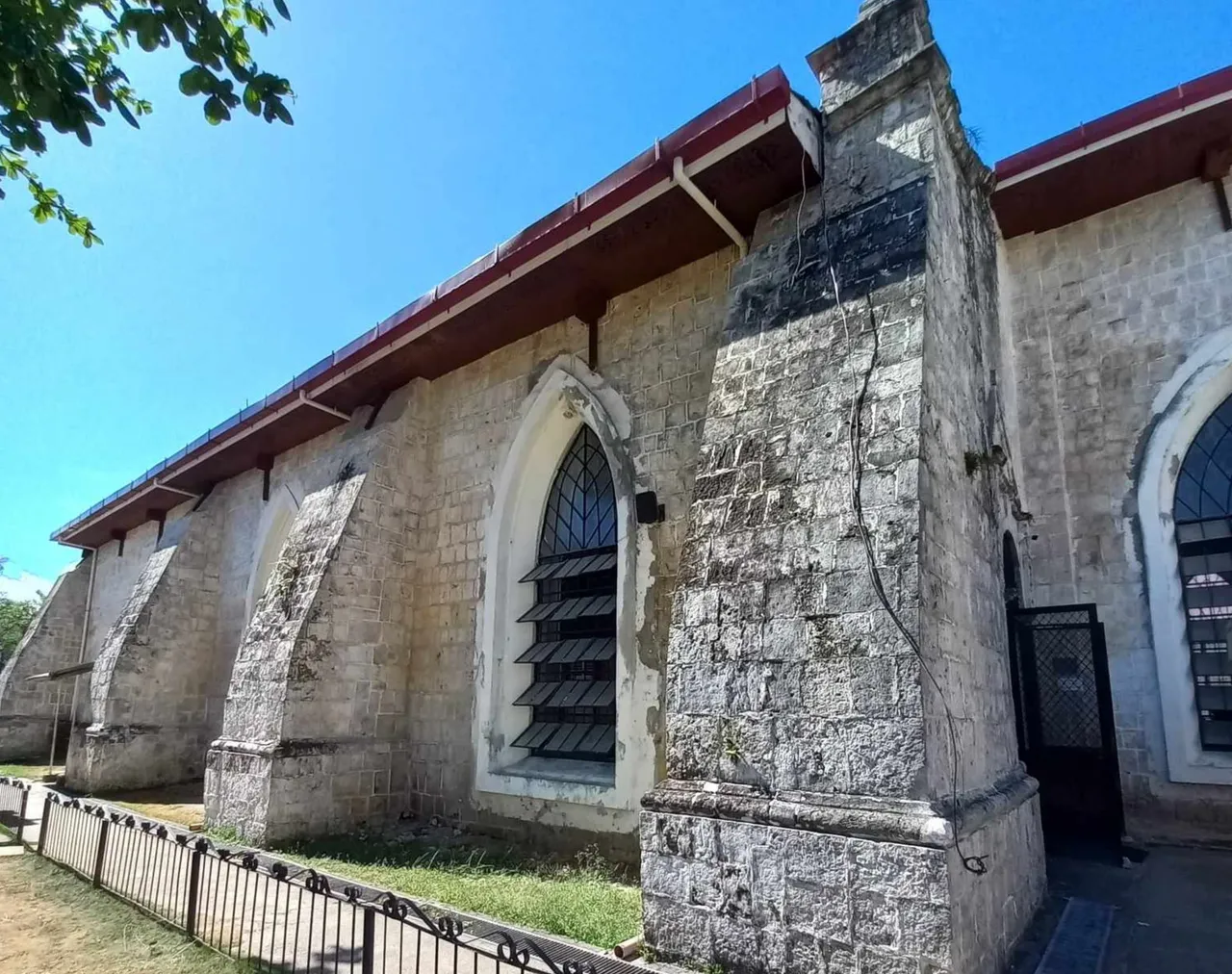
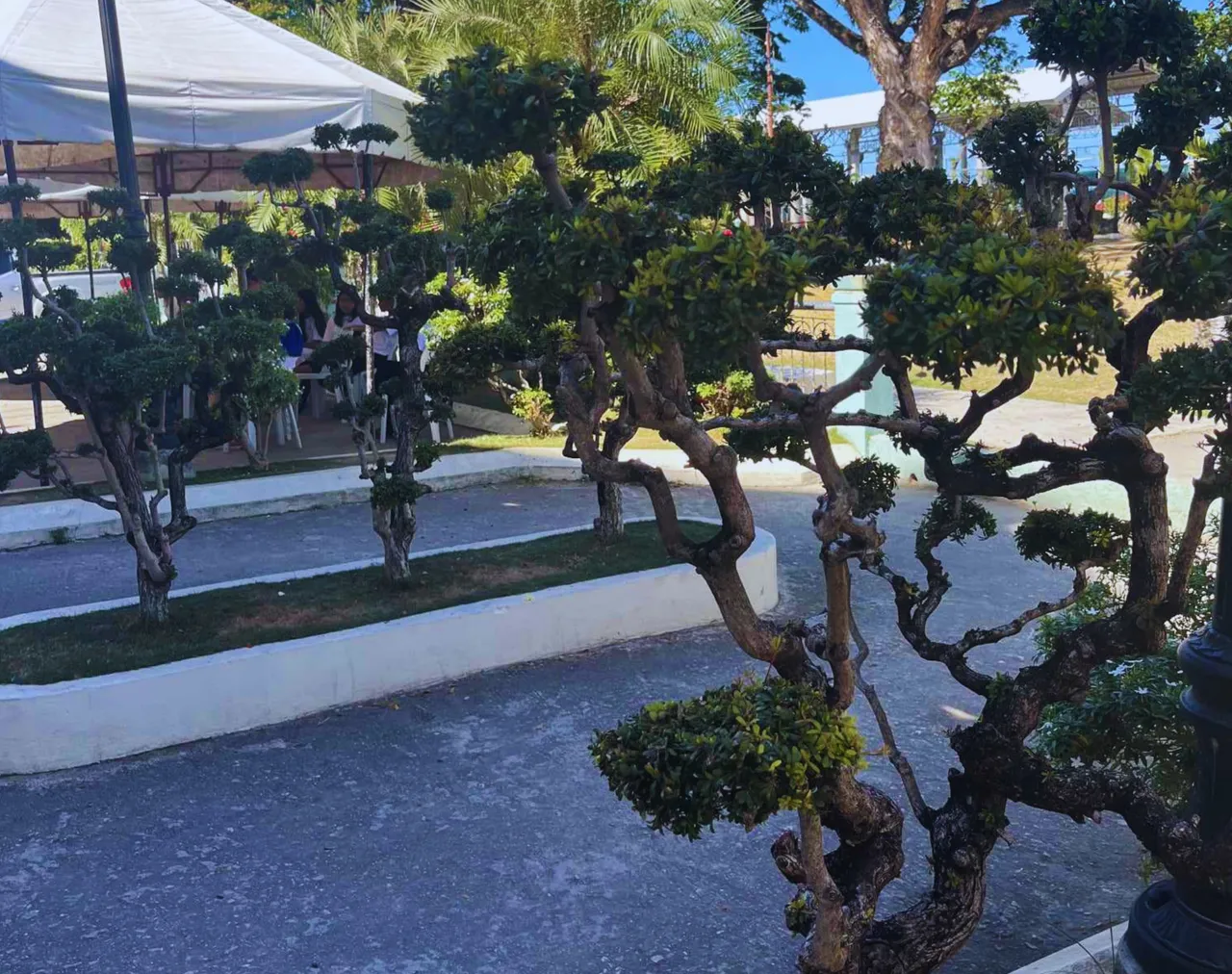
It took us almost a day of traveling and conquering the blazing heat of the sun while traveling by motorcycle but it did not stop us or hinder us to go fourth to our destination. It was all worth it. The time spent, the prayers offered, and the blissful feeling of seeing the beautiful sceneries around Southern Cebu.
That's all for today's blog my dear friends. I hope you enjoy reading and seeing how beautiful the churches in Southern Cebu.
Thank you for taking the time to read and give a little upvote to my blog. See you on my next blog. Keep safe everyone!